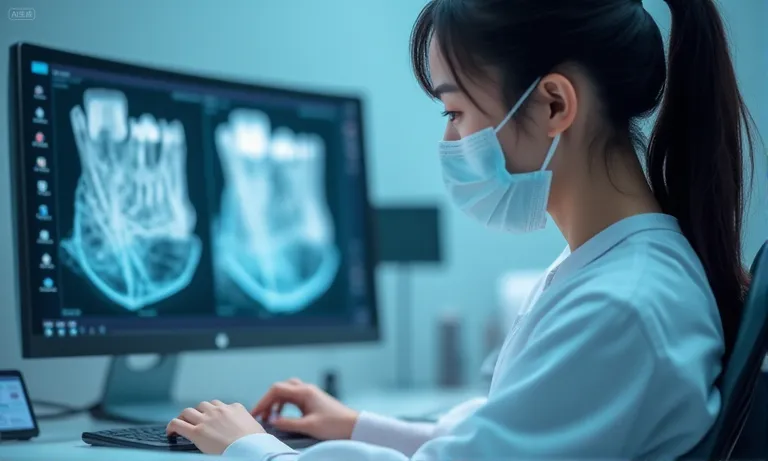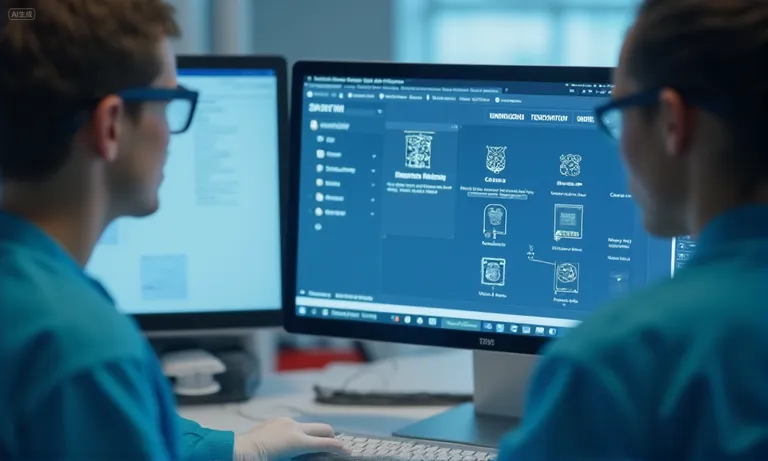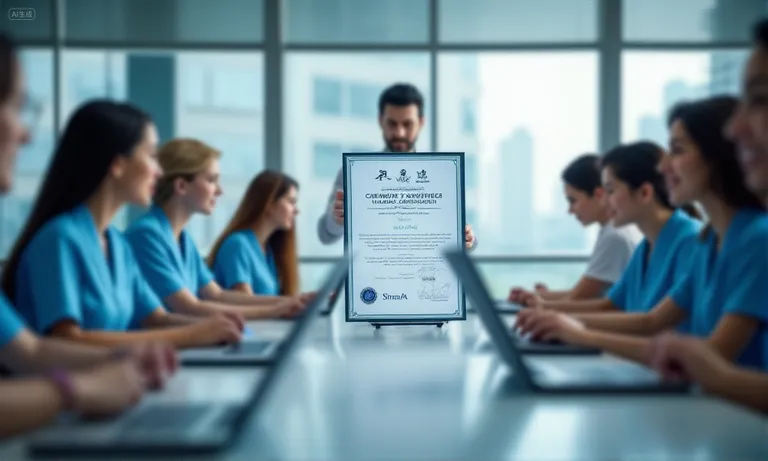Managing digital file ownership and data security is one of the biggest challenges in dental implant OEM lab partnerships. Clinics need to ensure they retain control of patient scans and CAD/CAM designs, while labs must have the right to use them for production. Without secure workflows and clear agreements, disputes and compliance risks can quickly derail collaborations.
The most common challenges include: unclear ownership of STL files and 3D scans, exposure to HIPAA/GDPR fines from data leaks, and intellectual property misuse when switching labs.
Practical steps to address these risks include: defining ownership clearly in contracts, setting file retention and secure destruction policies, adopting encrypted transfer protocols, and verifying compliance certifications such as ISO/IEC 27001.
When these measures are in place, clinics benefit from: fewer disputes, stronger legal protection, lower risk of data breaches, and smoother continuity of implant cases even when changing suppliers.
When both clinics and OEM partners commit to transparent rules and secure digital practices, they not only protect sensitive data but also reinforce long-term trust. That trust enables global dental labs, such as Raytops, to support clinics reliably with both high-quality restorations and robust digital stewardship.
Understanding Digital File Ownership in Dental Implant Workflows
Digital file ownership in dental implant workflows is often misunderstood, yet it defines who controls critical assets such as STL files, CAD/CAM designs, and 3D scans. In practice, dentists expect to retain intellectual property while OEM labs require access for production, creating a gray zone of shared responsibility. Clear agreements are essential to avoid conflict when switching labs or reusing designs across cases.

digital-file-ownership-dental-la
Key digital assets: STL files, CAD/CAM designs, 3D scans, digital implant planning data
The core digital assets in implant workflows include STL files from intraoral scans, CAD/CAM designs created during restoration planning, and surgical guide data for implant placement. These files represent both patient-specific information and technical blueprints, making them valuable beyond a single treatment. Without clear ownership rules, labs may store and reuse files in ways not anticipated by the original clinic.
Ownership debate: dentist vs. OEM lab vs. shared rights
Dentists argue that all digital files are patient-related and therefore should remain their property, while OEM labs often claim partial rights over designs they have refined or optimized for manufacturing. In reality, many agreements establish a middle ground: dentists retain intellectual property, and labs obtain limited usage rights strictly for fabrication. For example, some U.S. DSOs specify in their contracts that STL and planning files must always remain under clinic control, even if a case is outsourced to an overseas dental lab partner like Raytops dental lab.
Risks of unclear ownership: disputes when switching labs or reusing designs
Unclear ownership can trigger disputes when a clinic changes suppliers. One European clinic we worked with faced delays because their previous lab refused to release CAD files, forcing them to rescan and redesign multiple implants. This not only increased turnaround time by two weeks but also risked patient dissatisfaction. From our perspective as a global dental lab, the lesson is that contracts should clearly state file transfer rights to protect continuity of care. Learn more about STL file standards here.
When file ownership is clearly defined, both dentist and lab benefit from smoother collaboration. Dentists can switch partners without fear of losing digital assets, while labs like Raytops can operate confidently within agreed boundaries, knowing their work is properly authorized.
The Risks of Poor Data Security in OEM Lab Partnerships
Poor data security in OEM dental lab partnerships exposes both clinics and patients to severe risks, from privacy violations to intellectual property theft and technical breaches. Without robust safeguards, sensitive implant files can be leaked, misused, or corrupted, creating compliance liabilities and eroding trust between dentist and lab.

dental-data-security-risks
Patient privacy risks: HIPAA/GDPR violations from file leaks
When implant files contain identifiable patient information, any leak can trigger serious privacy violations. HIPAA in the U.S. and GDPR in Europe require strict safeguards for handling digital health data. A single unencrypted email attachment or misplaced USB drive can expose clinics to regulatory fines, reputational damage, and patient mistrust. In cross-border outsourcing, compliance risk multiplies, as data may pass through multiple jurisdictions. See official GDPR guidelines.
IP misuse: unauthorized reuse of implant designs and workflows
Beyond patient privacy, there is also the risk of intellectual property misuse. Some labs might reuse a clinic’s unique abutment design or surgical guide workflow in other projects without authorization. This not only undermines the clinic’s competitive edge but can also lead to legal disputes. From our experience as an overseas dental lab, strong contractual boundaries combined with internal data governance are necessary to ensure that designs are used strictly for the intended case.
Technical vulnerabilities: unencrypted transfers, insecure cloud storage, USB sharing
| Vulnerability | Example Scenario | Risk Level |
|---|---|---|
| Unencrypted file transfer | Sending STL files over standard email | High – easy interception |
| Insecure cloud storage | Generic file-sharing platforms without dental compliance | Medium – exposure through weak credentials |
| USB sharing | Physical drives passed between offices or labs | High – loss or theft of data |
Even technically small oversights, such as failing to encrypt files or relying on consumer-grade storage, can compromise hundreds of implant designs at once.
Security failures not only cause financial and legal consequences but also weaken the partnership foundation. A clinic that suffers a breach is less likely to trust the same supplier again. For OEM labs like Raytops dental lab, building credibility means going beyond production quality and proving that digital assets are handled with equal responsibility.
Establishing Clear IP and Data Agreements
Clear IP and data agreements define ownership, usage rights, and accountability in dental implant workflows. Without written rules, disputes over STL files, CAD/CAM data, or patient scans can delay treatment and damage professional relationships. Contracts that clearly separate intellectual property from usage rights give both dentists and OEM labs confidence to collaborate securely.

dental-ip-data-agreement-signing
Defining file ownership in contracts: dentist retains IP, lab holds usage rights only
| Party | Ownership | Usage Rights | Obligations |
|---|---|---|---|
| Dentist/Clinic | Retains all intellectual property over scans, STL files, and designs | May license usage to lab strictly for fabrication | Must provide accurate records and specify restrictions |
| OEM Lab | Does not own IP | Gains temporary usage rights to produce restorations | Must not reuse or resell files outside scope |
| Shared (optional clause) | Some workflows allow shared derivative rights | Both parties define limits on derivative use | Clear boundary clauses to prevent misuse |
This structure ensures that while dentists remain the legal owner of digital assets, labs like Raytops dental lab have enough rights to execute fabrication efficiently.
Data retention & destruction policies: how long labs can store files, and secure disposal
- Define retention period: e.g., 2–3 years for clinical recordkeeping.
- Limit access: files stored only on encrypted servers with restricted roles.
- Schedule secure disposal: files must be permanently deleted or anonymized after expiration.
- Verification: labs provide certificates of deletion upon request.
Such step-by-step policies protect clinics from indefinite file storage and lower the risk of unauthorized reuse long after a project ends.
Dispute resolution: accountability and penalties in case of breaches
Contracts should include clauses on how disputes will be handled if file misuse or data leaks occur. This may involve arbitration, financial penalties, or liability transfer depending on jurisdiction. One DSO we supported in Australia required any OEM partner to accept binding arbitration in case of digital IP disputes, which allowed faster resolution and avoided lengthy litigation. This example shows that proactive legal structures can prevent workflow interruptions and maintain patient trust.
When agreements are drafted with precision, both parties know where they stand. Dentists can safeguard their intellectual property, while global dental labs operate within clearly defined boundaries.
Implementing Secure Digital Workflows
Secure digital workflows protect sensitive implant files from breaches while ensuring predictable collaboration between clinics and OEM labs. By standardizing transfer protocols, limiting access rights, and establishing robust backup systems, dentists and labs reduce the risk of data loss or misuse while improving operational efficiency.

secure-digital-workflow-dental-lab
Secure transfer protocols: SFTP, VPN, or encrypted dental cloud platforms (avoid email/USB)
- Use secure file transfer methods such as SFTP or VPN rather than standard email.
- Adopt encrypted cloud platforms designed for dental workflows, with audit trails for compliance.
- Prohibit USB drives or physical transfers that can be lost or stolen.
- Standardize clinic–lab data exchange to a single, secure channel.
These steps ensure files are moved safely between clinic and lab without creating weak points that attackers can exploit.
Role-based access control: limiting lab technicians’ file access based on responsibility
- Technicians should only access the specific case files they are assigned to.
- Sensitive design data must remain restricted to senior staff with authorization.
- Admin rights should be limited to IT managers to prevent uncontrolled access.
- Access logs should be regularly reviewed for unusual activity.
This layered control system prevents unnecessary exposure of files and ensures accountability at each access point.
Backup and disaster recovery: dual local + cloud storage for implant design data
Secure workflows also include robust backup strategies. Dual storage—local encrypted servers plus cloud redundancy—protects against both physical accidents and cyberattacks. One clinic we collaborated with in Canada faced a ransomware incident, but because their files had been mirrored on a secure cloud platform with our lab’s coordinated backup system, their implant designs were restored within 48 hours without patient impact. This demonstrated how a lab–clinic partnership can mitigate disruption through joint data protection planning.
When secure workflows are implemented properly, both dentists and labs work with confidence. Clinics avoid compliance penalties, while overseas dental labs like Raytops demonstrate reliability not just in product quality but also in digital stewardship. See NIST cybersecurity framework for further guidance.
Ensuring Compliance and Certification
Ensuring compliance and certification in digital dental implant workflows protects both patient data and intellectual property. Clinics and OEM labs must align with international security standards, medical device regulations, and privacy laws to avoid penalties and maintain trust. Verified certifications demonstrate that a lab is capable of handling sensitive data responsibly.

Image
dental-lab-compliance-audi
ISO/IEC 27001 for information security management
| Standard | Focus Area | Relevance for Dental Labs |
|---|---|---|
| ISO/IEC 27001 | Information security management systems | Proves that the lab follows structured risk management and secure handling of digital files |
| ISO/IEC 27701 (extension) | Privacy information management | Demonstrates capacity to manage personal data in compliance with privacy laws |
Labs certified under ISO frameworks show that their workflows are independently audited and internationally recognized.
FDA requirements for digital dental devices and implant data handling
- FDA requires digital dental devices, including CAD/CAM and surgical planning systems, to follow quality system regulations.
- File traceability must be maintained to demonstrate device safety and efficacy.
- Labs collaborating with U.S. clients must align with these requirements, even if production occurs overseas.
- Non-compliance can prevent labs from supplying critical components to U.S. clinics.
HIPAA/GDPR compliance for patient data, especially in cross-border lab collaborations
Patient data is protected by HIPAA in the U.S. and GDPR in the EU. Both frameworks demand explicit consent, encryption, and limited retention periods. In cross-border collaborations, data may travel through multiple legal zones, which increases exposure. A lab lacking proper safeguards risks not only regulatory fines but also loss of client contracts. This is why global partners, including Raytops dental lab, embed HIPAA/GDPR-compatible processes when handling sensitive implant case files.
Verifying OEM lab’s internal audit and compliance practices
- Request the lab’s compliance certificates and audit reports.
- Check frequency of internal audits (at least annually).
- Confirm that corrective actions are tracked and documented.
- Validate whether third-party auditors have verified compliance.
By following these steps, clinics can evaluate whether a potential partner has credible security measures or if claims are only on paper.
When compliance frameworks are implemented correctly, both clinics and labs work within clear legal and technical boundaries. Certifications reduce uncertainty, speed up partnership approvals, and signal long-term reliability. Read more about ISO 27001 standards.
Building Trust and Long-Term Data Protection
Trust in OEM dental lab partnerships is built not only on consistent product quality but also on reliable data protection. When both parties commit to transparency, shared accountability, and continuous improvement, long-term cooperation becomes more resilient against risks and more rewarding for both dentist and lab.

dental-lab-trust-data-protection
Transparency: regular reporting on data handling and security measures
- Clinics should request periodic reports on how files are stored, accessed, and destroyed.
- OEM labs can enhance trust by publishing clear protocols and compliance certificates.
- Open reporting ensures that security measures are more than promises.
Shared responsibility: dentist + OEM lab joint accountability in protecting data
Data protection is never a one-sided effort. Dentists provide accurate records and patient consent, while labs enforce secure handling and retention policies. When both parties share accountability, it reduces disputes and ensures smoother workflows. From our position as an overseas dental lab, we see that shared responsibility is a deciding factor in whether a partnership lasts beyond initial projects.
Continuous improvement: adopting new CAD/CAM and AI security standards as they evolve
- Track updates to CAD/CAM software for new security patches.
- Evaluate emerging AI-driven tools for anomaly detection in data access.
- Upgrade encryption protocols as industry standards evolve.
- Train staff regularly to adapt to changing compliance requirements.
Continuous improvement ensures that today’s secure system does not become tomorrow’s vulnerability.
Trust through success: secure workflows enable smoother, long-term partnerships
A mid-sized U.S. dental group we supported struggled with data fragmentation across multiple labs. By consolidating their workflow into a single encrypted platform and aligning file retention policies, they reduced remake cases by 18% within the first year. The clinic’s procurement lead specifically noted that consistent data protection was a key reason they continued expanding orders with our lab. This illustrates how security, when proven in practice, becomes a foundation for lasting trust.
When trust is reinforced through visible security practices, both clinics and labs gain confidence to grow together. See HIPAA compliance resources for practical guidance.
Conclusion
Managing digital file ownership and data security is no longer optional in dental implant OEM partnerships—it is the foundation of sustainable collaboration. Clinics need clarity on who owns critical design files, protection against data misuse, and confidence that compliance is enforced. OEM partners, in turn, must demonstrate discipline in secure workflows, certifications, and transparent reporting.
By working with an overseas dental lab that treats digital stewardship as seriously as product quality, both sides can reduce disputes, avoid costly breaches, and focus on long-term patient outcomes. Trust built on data security not only protects sensitive assets but also strengthens the professional bond that makes global partnerships truly sustainable.


